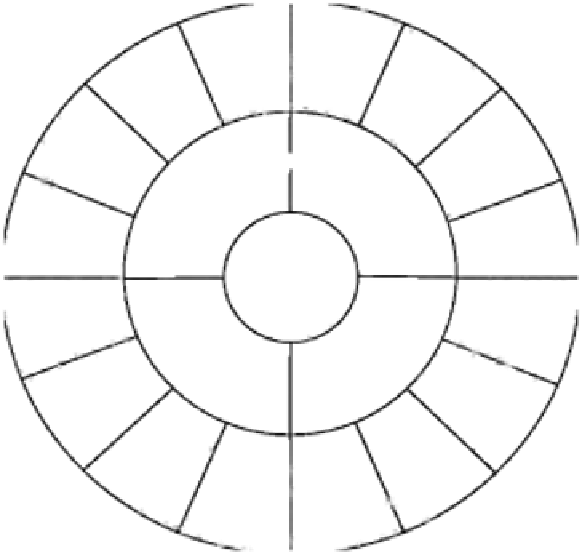Environmental Engineering Reference
In-Depth Information
Fuels-
green
diesel
Fisheries
Fuels-
jet fuel,
hydrogen
Fodder
Food
ingredients
Fuels-
fossil
Products
Food
Biofuels
Food
Fuels-
cooking
Green solar
gardens
Fine
medicines
Fresh
water
Novel
solutions
Ecological
solutions
Famine and
disaster
relief
Fresh
air
Foreign
aid
Forests
Fabrics
Fertilizers
FIGURE 24.6
Green solar products and solutions.
around new crops such as guayule, a plant that produces natural rubber, and jojoba,
with a seed than produces oil. Similarly, early attempts at new growing systems such
as hydroponics failed to live up to their hype. However, none of these new products
offered a strong competitive advantage or an expansive product mix. Algae offer an
intriguing ecological design that meets and aligns with the conservation needs of the
West and Southwest.
24.9 Algae Production Aligning with Ecological Design
David Orr, in his article in this topic on ecological design, suggests mimicking nature on
six dimensions in order to craft successful ecological models. Table 24.4 illustrates how
algae could provide an effective model.
Algae's adaptability make in sufficiently malleable to fit numerous ecological design
variations based on situational need such as access to waste CO
2
, wastewater, or other
needs. In the near future, every wastewater treatment facility, dairy, power plant, and other
air, soil, and water polluter may build algal production systems to turn their waste streams
into revenue-producing products. Transforming waste streams to food and energy near
urban centers will reduce transportation costs significantly while assuring a reliable and
affordable source of food.



Search WWH ::

Custom Search